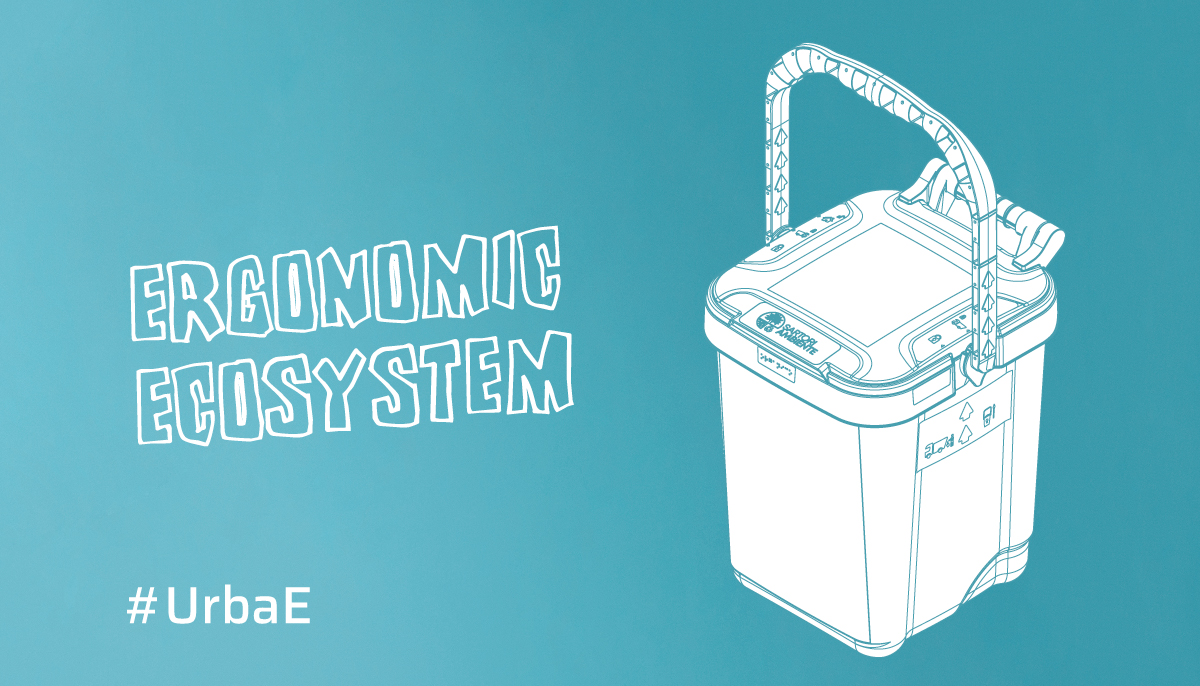It’s called UrbaE, and it’s our latest creation.
Urba, because it belongs to the large family of household containers, and E, because ergonomics is evident in its design.
The project was born in 2023 when our research team was given a task: to design a container for waste sorting that perfectly fits into an ergonomic ecosystem.
From the initial idea, a journey began, involving multiple stakeholders:
- Biomechanical technicians
- Experts in behavioral techniques
- Waste collection managers
- Designers
- Product engineers
- Citizens
Each of them played a crucial role in different phases of the project to ensure that we gathered the best feedback from each target group.
The Development Process
The first phase involved waste collection managers – Contarina, Fiemme Servizi, and SAE Valle Sabbia – with whom we spent collection days, closely following the operators as they managed the emptying of household containers.
The analysis continued in the lab with CERISM technicians, who studied the postures of waste operators during their work activities.
The goal was to collect objective data on the correct postures to adopt while working and evaluate the “container” as a tool that could facilitate these positions.
Based on the collected data, we began designing a container element that could integrate all the insights we had gathered.
The container is used by two fundamental users – the citizen and the waste operator – who have different and often non-integrable needs. This posed a challenge we aimed to overcome, ensuring a smoother and more efficient interaction between citizens and operators.
Psychology and Symbolic Communication
To address this challenge, we collaborated with the Department of Psychology and Cognitive Sciences of the University of Trento, with whom we have been working for three years on applying Nudge Theory to the waste sector. (If you missed the results of the nudging project carried out in Latina, you can find the link here.)
The container must be understandable to everyone, regardless of language or country of use. For this reason, symbols were the best way to ensure universal communication.
To select the most suitable symbols, we directly involved citizens: through street interviews in our cities, we identified the clearest way to communicate with everyone.
The chosen representations allow users to correctly and safely perform all the actions necessary to position the container.
Recognized Excellence
Our objective was to create a product that makes the operator’s work safer and increases user engagement. This goal was achieved and recognized through two prestigious certifications:
- Human-Centered Design (HCD) Certification for the Design Process
- 4-Star Ergonomic Product Certification
